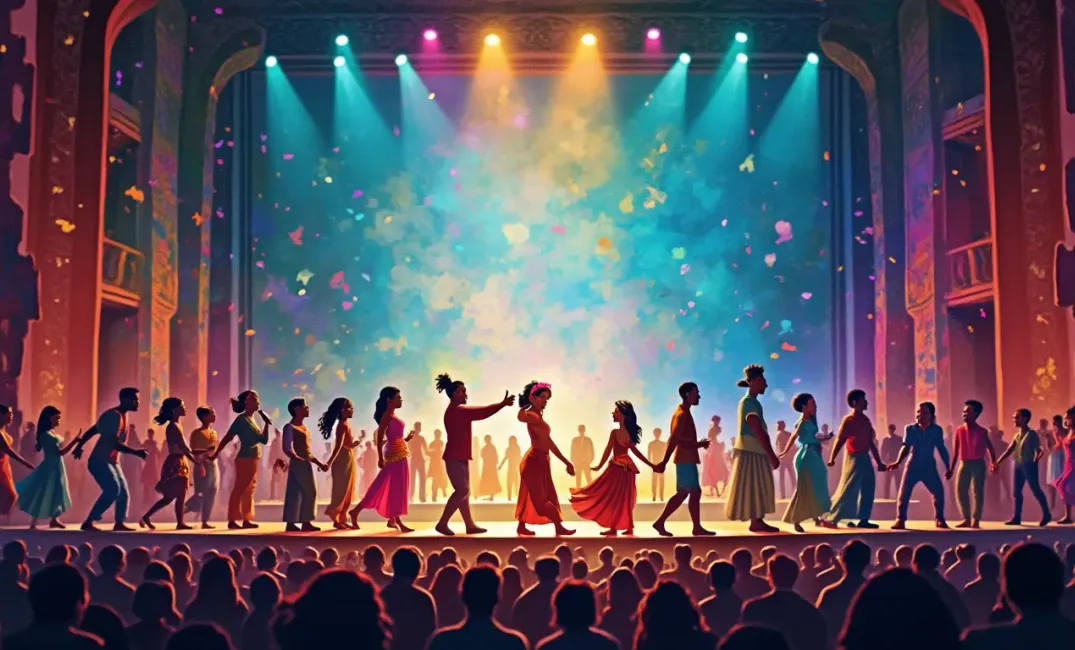Introduction: The Stage of Human Expression
"All the world's a stage, and all the men and women merely players." — *William Shakespeare*
Human art and performance have always been integral to the shared experience of civilization. Transcending borders and languages, art in its myriad forms—visual, theatrical, musical, and performative—serves as a mirror to society, reflecting our triumphs, fears, and dreams. As keepers of the human soul, artists have historically challenged conventions, provoked thought, and forged connections. This entry delves into the history and evolution of human art and performance, revealing its profound impact on culture, identity, and societal progress.
Roots of Artistic Creation: From Cave Walls to Storytelling
The Birth of Artistic Expression
- Primitive Art and Symbolism: Thousands of years before written language, early humans expressed thoughts, beliefs, and stories through cave paintings and carvings, marking the dawn of human creativity. Artifacts from places like Lascaux, Altamira, and multiple African sites showcase the universality of art as a medium for communication and cultural expression.
- Rituals and Ceremonial Practices: Early performance art likely found its origins in ritualistic and ceremonial practices, where tribal gatherings involved music, dance, and symbolic acts. These performances reinforced communal ties, marked sacred occasions, and sought to appease or communicate with deities and ancestors.
Oral Storytelling as Performative Art
- The Power of Narratives: Long before books and digital screens, humans gathered around fires to share stories, passing down legends, myths, and historical events through oral traditions. Storytelling was, and remains, a dynamic and performative art, engaged with audience interaction and personal interpretation.
- The Role of the Bard and Griot: Across cultures, figures like the European bard, the African griot, and the Indian kathakali were revered storytellers who preserved and performed the oral history of their people, bringing tales to life through word and music, simultaneously entertaining and educating audiences.
Evolution of Performing Arts: Theater, Music, and Dance
The Rise of Theatrical Arts
- Ancient Theaters: The ancient Greeks formalized theater as a powerful art form, with playwrights such as Sophocles and Euripides crafting narratives that explored the human condition. Roman theaters and amphitheaters expanded these traditions, blending drama, comedy, and pantomime with grand architectural designs.
- Medieval to Renaissance Revival: Despite the decline of organized theater during the Middle Ages, performance thrived in religious morality plays and street performances. The Renaissance rekindled interest in classical themes, as playwrights like Shakespeare and Molière elevated theater to new artistic heights, blending pathos with innovation.
Music and Dance Through Cultures
- Universality of Music: Music has been a core expression of human emotion across all cultures. Spanning the complex raga systems of India, the intricate rhythms of African drums, to the harmonies of European symphonies, music serves as both a mirror to and catalyst for emotional and social dynamics.
- Dance as Storytelling: Dance carries stories through rhythmic movement, interpreting narratives and emotions, often embodying cultural identity. From the elegant ballets of Europe to the sacred Maori haka, dance forms have perennially connected performers to audiences through shared language of movement.
The Art of Rebellion: Challenging Norms Through Artistic Vision
Protest and Social Commentary
- Art as Activism: Artists have historically leveraged their medium to comment on social injustices, influence public opinion, and spearhead change. Iconic works by figures such as Frida Kahlo, Picasso, and Ai Weiwei transcend aesthetics, offering powerful critiques on identity, war, and freedom.
- Theater for Social Change: The rise of new theatrical movements like Theatre of the Oppressed by Augusto Boal offer methods to explore and dismantle power dynamics through participatory performance, empowering marginalized voices and fostering dialogue and transformation.
Pushing the Boundaries of Art
- Avant-Garde and Innovation: Movements like Dadaism, Surrealism, and Expressionism emerged as a reaction to societal norms, war, and cultural stagnation. Pioneers like Salvador Dali and Marcel Duchamp defied convention, reshaping perspectives on what constitutes art.
- Technology and New Media: The digital revolution enabled art forms that explore intersections of technology and human experience. Video art, virtual reality performances, and interactive installations invite audiences to become co-creators in immersive experiences that challenge perceptions.
Art as Cultural Identity and Heritage
Preserving Traditions Through Art
- Heritage in Visual and Performative Arts: Many cultures engage art as a living repository of tradition and heritage, preserving ancestral customs and celebrating identity. Museums, festivals, and living history performances keep these heritages alive for future generations.
- Cultural Diplomacy and Exchange: Artistic exchange promotes cross-cultural understanding and appreciation. Art forms serve as cultural ambassadors, often transcending political and linguistic barriers by fostering dialogue, reshaping perspectives, and uniting diverse peoples.
Art in Times of Crisis
- Coping Mechanism and Resilience: Throughout history, humanity has turned to art to make sense of suffering and adversity. Artists provide a space for reflection, mourning, and healing, capturing the resilience of the human spirit in times as dark as pandemics or wars.
- Rebuilding Through Culture: After destruction, art often plays a pivotal role in societal rebuilding and reconciliation. Projects focused on cultural revival, such as rebuilding lost monuments or reviving traditional crafts, help communities honor resilience and reclaim identity.
Conclusion: The Ever-Evolving Stage of Humanity
"Art is not a mirror held up to reality, but a hammer with which to shape it." — *Bertolt Brecht*
From the earliest gestures on cave walls to the digitally enhanced installations of today, art and performance remain seminal chapters in humanity's narrative. They document the human story, provoke change, celebrate diversity, and unify us through the universal language of creativity.
Artistic expression possesses a unique ability to capture the human journey, reveal truths, challenge conventions, and envision new futures. As humanity continues its cosmic journey, art will remain the beacon that illuminates our shared exploration, guiding our creativity and compassion.
We preserve this legacy not just for the artistry itself but for the timeless conversations it inspires—conversations that echo our universal quest for meaning, connection, and transcendence. On this boundless stage, the performance continues, unfettered and infinite, an eternal ode to the indomitable spirit of human creativity.
MUSIC, HISTORY, THEATER, ACTIVISM, PERFORMANCE, SOCIETY, CULTURE, ART, SOCIAL CHANGE, DANCE

